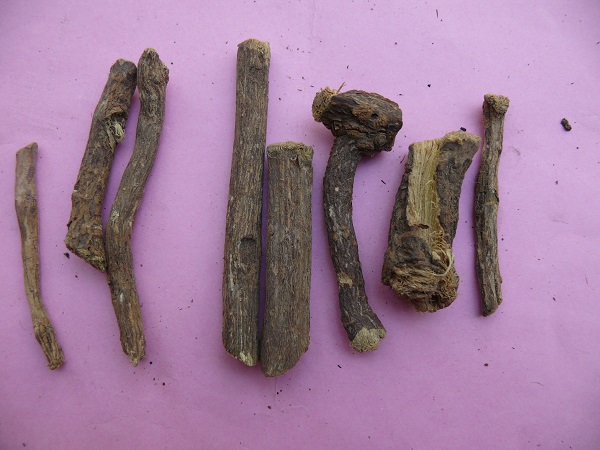
| Family | Fabaceae |
| English Name | Liquorice, Mulethi |
| Malayalam Name | Erattimadhuram, irattimadhuram |
| Tamil Name | Adhimathuram |
| Kannada Name | Athimadura, jesthamadhu |
| Telugu Name | Atimaduramu, yashti-madhukam |
| Hindi Name | Jetimad, kubas-susa, mithilakdi |
| Sanskrit Name | Jalayashti, klitaka, madhusrava |
| Trade Name | Liquorice |
| Part Used | Roots |
| In Wild | Yes |
| Under Cultivation | Yes |
| Temperature | NA |
| Rainfall | Not more than 500 mm |
| Farmers | NA |
| Traders | NA |
| Institution | NA |
| Individually | NA |
| State/Region | NA |
| District | NA |
| Nursery Information | NA |
| Yield | The average yield of dried roots varies from 1-3 tonnes per hectare depending on the variety, soil and climatic conditions. |
| Economic of cultivation | NA |
| Quantitative quality standards | Root • Foreign matter: Nil • Ash: Not more than 6.5 per cent • Acid-insoluble ash: Not more than 1.0 per cent • Alcohol-soluble extractive: Not less than 17.0 per cent • Water-soluble extractive: Not less than 26.0 per cent Stem • Foreign matter: Nil • Ash: Not more than 5.0 per cent • Acid-insoluble ash: Not less than 1.0 per cent • Alcohol-soluble extractive: Not less than 14.0 per cent • Water-soluble extractive: Not less than 19.0 per cent |
| Description | NA |
| Agro technology/Cultivation practices | 1. Planting-stock production: Planting material is an old crown of roots of 10-15 cm long pieces having 2-3 buds. It could be placed in furrows mode in rows at planting. 300 kg of planting material is required for one-hectare land. 2. Field planting: The cuttings of the underground stem/ stolon of 10-15 cm length, possessing 2- 3 eye buds are planted 6- 8 cm deep in the soil at a distance 60 x 45 cm or 90 x 45 cm during spring seasons. The stolon begins sprouting in 15- 20 days after planting. The crop remains in the field for 3-4 years duration for proper growth of stolon for high yield. 3. Manuring/Fertilization: Farm Yard Manure (FYM) has been found useful for good development and growth of underground roots and should be applied at the rate of 10 t/ha at the time of field preparation. 4. Irrigation practices: The crop requires irrigation at an interval of 30-45 days in dry summer season. one to two irrigations is given during the winter season to maintain root health. In all 7- 10 irrigations are given to the crop per year. It is important to avoid water-logging in the field as the stagnation of water in the field will cause damping-off disease and root rotting which cause large-scale damage to the growing plants. 5. Pests and Diseases: The plant is reported to be affected by panashmosaic caused by a virus. The plants were found to be affected by Myllocerus undecimpustulatus, the insect belonging to the order Coleoptera of family Curculionidae. |
| Harversting | High yields are obtained from 3 or 4 years of planting. Manual digging is carried for the harvesting of roots. The crop is harvested in the winter season. |
| Processing | At the time of harvest, the roots contain 50- 60 per cent moisture and should be dried under the sun for 2- 3 days and then in shade for next 10 - 12 days. Dry roots possess less than 10% moisture when these are ready to be stored in polythene – lined bags. The roots are cut into pieces of convenient size and are sorted into grades, based on thickness and stored. |
| References | NA |
